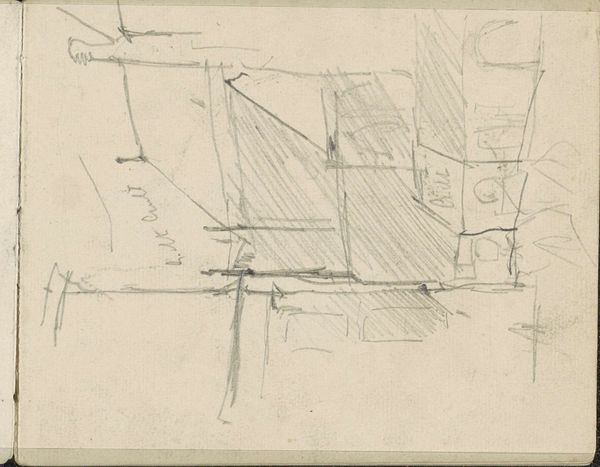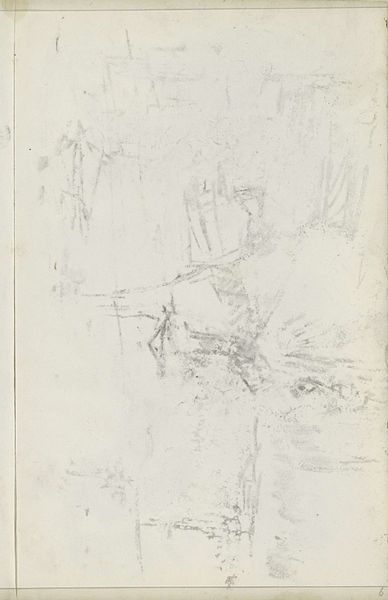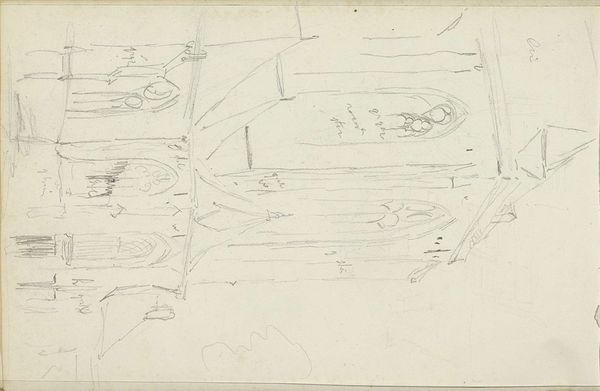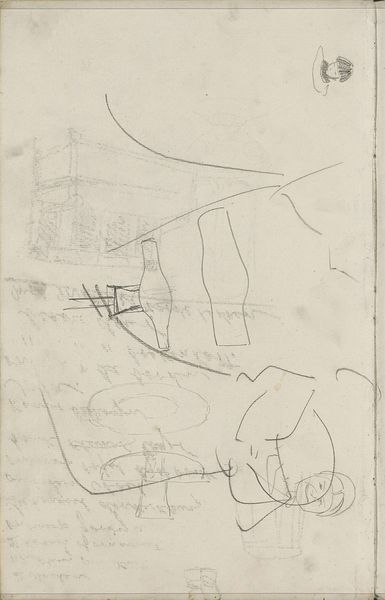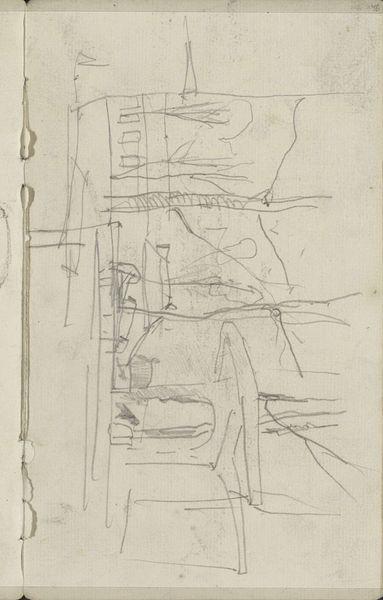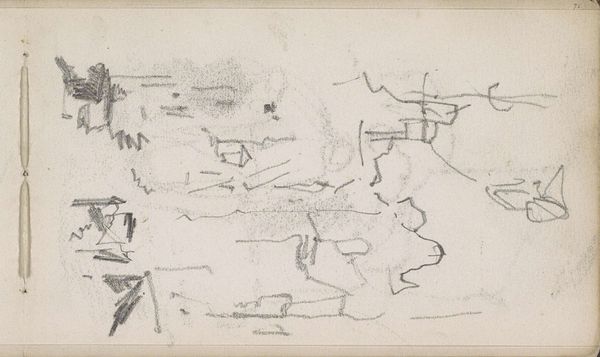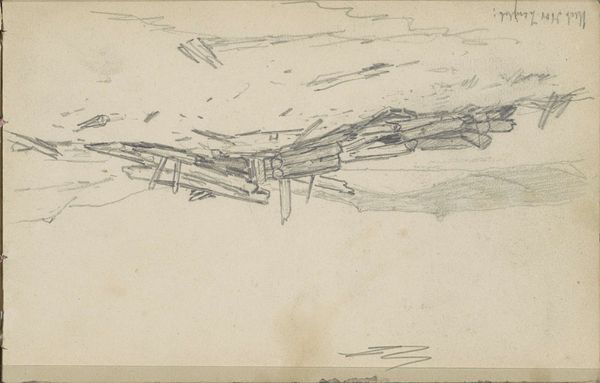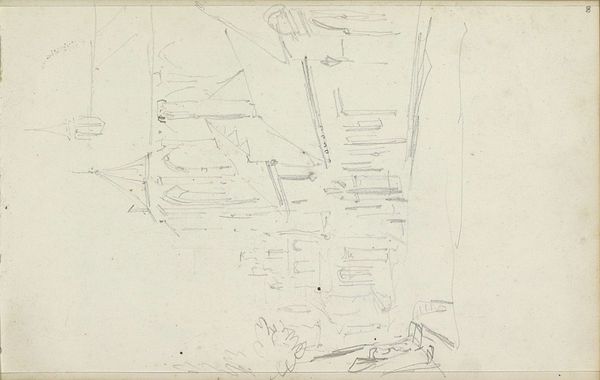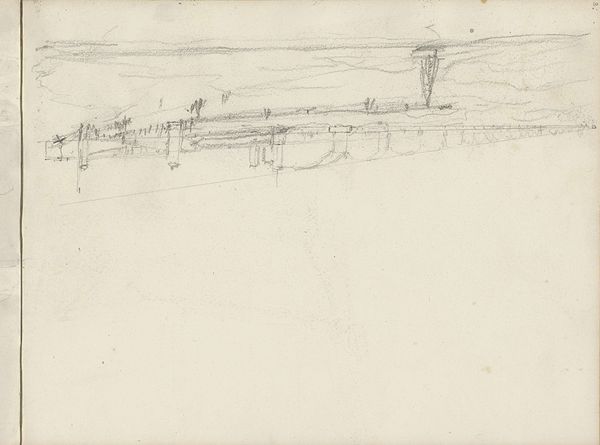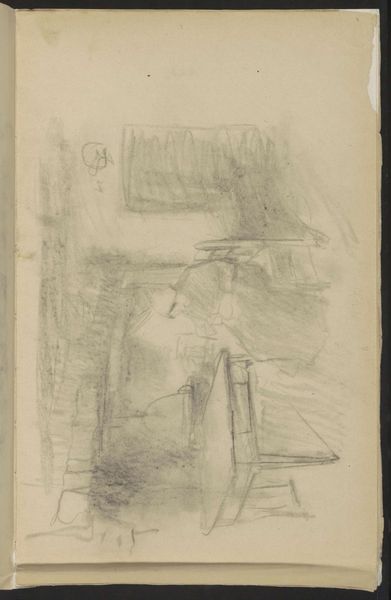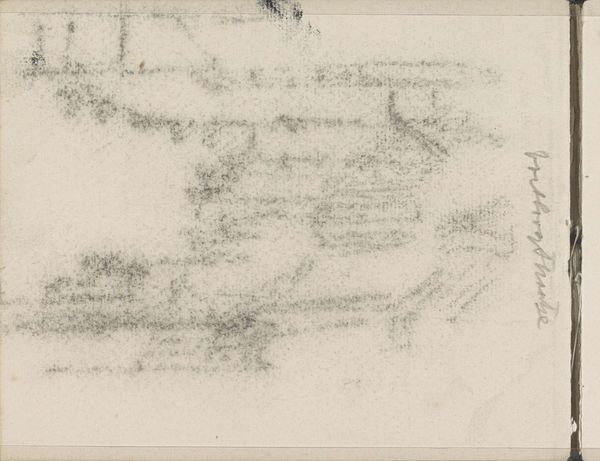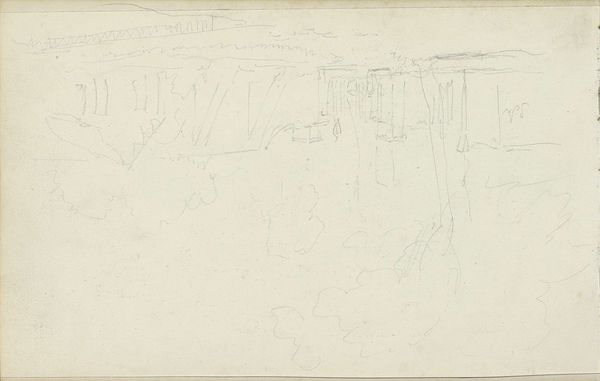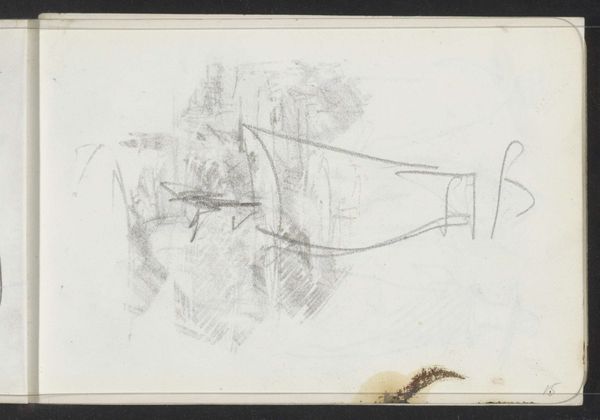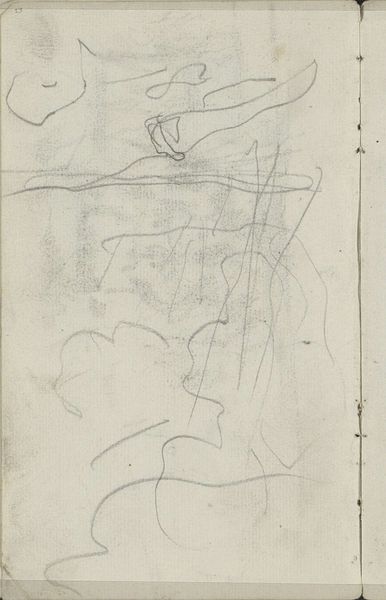
drawing, pencil
#
drawing
#
aged paper
#
toned paper
#
impressionism
#
incomplete sketchy
#
hand drawn type
#
landscape
#
personal sketchbook
#
sketchwork
#
ink drawing experimentation
#
pencil
#
sketchbook drawing
#
sketchbook art
#
initial sketch
Copyright: Rijks Museum: Open Domain
Editor: This is "Studie," a pencil and ink drawing by George Hendrik Breitner, made between 1884 and 1886. It's currently held in the Rijksmuseum. I'm immediately struck by its ephemeral quality; it feels like a fleeting thought captured on aged paper. What aspects of this work draw your attention? Curator: The visible process, the “sketchiness” as you say, is quite revealing historically. Think about the rise of Impressionism at this time, which really challenged academic conventions around finished versus unfinished artworks. How do you see this "incomplete" drawing fitting into the art world of the 1880s? Editor: I guess it provides insight into the artist’s process, making art more approachable and less about idealized representation. Is that what made this shift appealing to a broader audience? Curator: Precisely. The “personal sketchbook” vibe invites viewers into the artist's private sphere, and democratizes the experience of art. Also, consider the location, the Rijksmuseum itself. What does it mean to house an artwork like this within such a prominent and historically significant institution? Editor: That's an interesting question. By placing a simple sketch within this important space, is the museum legitimizing this type of artwork and perhaps validating a more informal and personal style of artistic expression? Curator: Yes, but think even further. What other types of artwork do you find around this type of initial work. Are the museums potentially shifting from showcasing primarily polished masterpieces towards illustrating the entire spectrum of artistic creation, emphasizing artistic ideas in this cultural institution? Editor: So, by displaying preparatory works like this "Studie," the museum shows the evolution and messy creative process and that are worthy of consideration. This shift normalizes that "imperfect" is something to value when learning about the history of art! Curator: Precisely. These glimpses into the artist’s mind offer an educational opportunity, reflecting broader social values and democratizing access to art in public institutions. Editor: It’s fascinating how a seemingly simple sketch can spark a conversation about artistic process, institutional values, and the role of art in society. Curator: Absolutely, a constant reminder that art reflects culture.
Comments
No comments
Be the first to comment and join the conversation on the ultimate creative platform.
